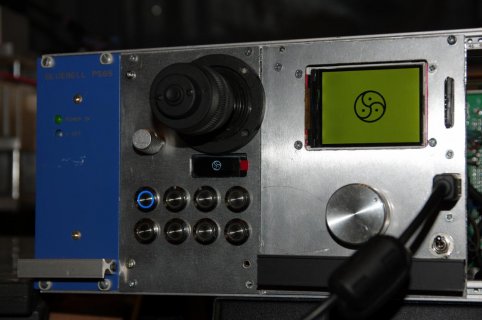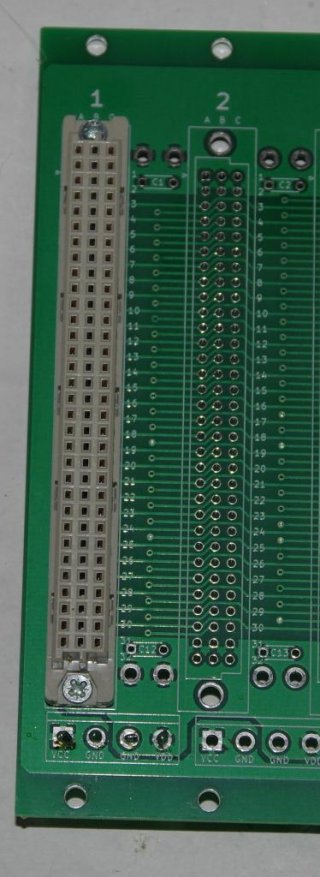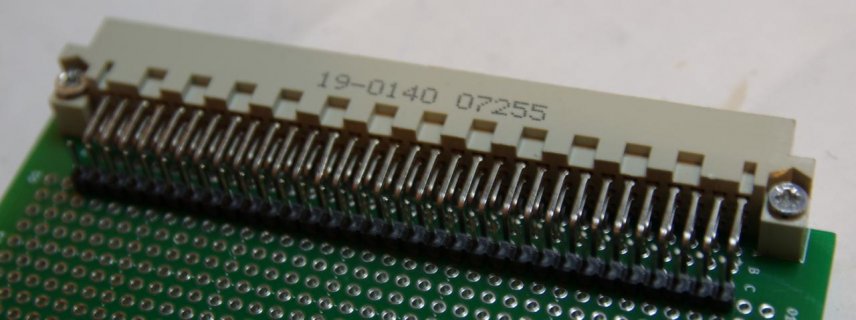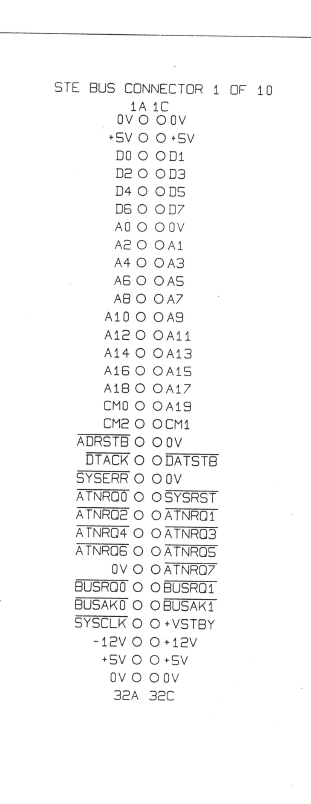Paul Hesketh
Member
Hiya - not posted for a while, been way too busy with DIY oak parquet flooring, hobbies had to take a back seat for a while. Anyways, I've decided to change the way I assemble things, having constant frustration with fragile and crappy breadboard connections as well as enclosures, so eventually decided that eurocard format is the way to go. Found some excellent eurocard and backplane boards being produced by
https://www.martenelectric.cz/index.html
so have started using them as a sort of "breadboard plus". Here's the first works in progress

I'm using a backplane in a 60hp verotec enclosure, with DIN41612 connectors to essentially extend/breakout out the pins of the teensy (a 4.1 on this one)

with sockets on the board and pin headers solder bridged onto the 41612 connectors and sockets


This seems to work pretty well so far, and having potentially 96 connections, seems pretty well suited to further expansion. I looked at the doepfer eurorack format, obviously based on the same principles, but prefer the number of connections, increased depth for mounting boards/physical components and the room for me to get my fingers in on the eurocard.
The cards from martenelectric allow a pretty simple access to row C, giving 32 pin outs, although 1/2 are gnd/vcc, and 31/32 are gnd/vdd.
Apologies for the waffle, but my main question is:
is there a standard pin organisation that I should use for the backplane? If others are using this kind of format for teensys, it might be sensible to use the same pins on the connectors to enable pcbs to be made simpler. If there isn't a standard (I've just used fairly random pins from the teensy attached to random pins on the connector), is it worth coming up with one on this forum? If so, is it better to organise pins by pin number from say the teensy 4, or by type of connection (serial, SPI, CAN, audio, I2C etc) to make it easier to integrate different families of teensy or other devices? I'm not at this level yet, but I'm intrigued by the possibility of using interoperable expansion boards. I'm just a hobbyist, and I'm sure there are factors I haven't considered, so would appreciate the input of anyone that actually knows what they are doing.....
End point of what I'm trying to achieve for now is a modular MIDI controller rack, for VST plugins and instruments. Set up inserts/effects/instruments in DAW, have dedicated hardware controllers in rack. A sort of virtual 500 series, essentially, but by using a "master teensy" avoiding some of the problems of MIDI device recognition, namings and allocations.
If interested, the start of this project contains ILI9341 display, 3 axis joystick, 1 mechanical switch encoder, 1 optical encoder wired through a level shifter, SSD1306 OLED, MCP23017 (used for 8 LED button switches), 1 mechanical on/off switch, wired to the red wire of USB port to switch USB power off when using external PSU. I also put in an external SD card reader, but can't get that to work atm, teensy seems to shut down when I insert a card. Possibly just a cheap crap board...
Other issue I have is that I've had to use the adafruit GFX library for now - the SSD1306 doesn't seem to play nice with the _T3 library, it won't compile and I get "redefinition of adafruit_gfx_button", so I presume there's something in the OLED library thats very specific. The front panels are my first attempts at making my own, drawn in Easel, and cut with a vevor 3020 cnc router, 2 flute alu mill and 2mm alu sheet. Cut at 0.1mm per pass, at 85% on the speed control. Gets there in the end...can get away with 0.2mm a pass with a new bit, but try to go much faster and it breaks bits or stalls the motor, which then blows a line fuse in the power supply. Far from perfect, but useable and getting better. The bluebell 5V psu and verotec rack were bought off ebay. I was concerned that leaving the PSU wired into VCC but not turned on would cause problems when powering teensy from USB, but I'd guess that there's a "backfeed" relay on the PSU, as I can hear a small click when USB power applied.
Anyways, enough for now, I'd appreciate thoughts and opinions.
Paul.
https://www.martenelectric.cz/index.html
so have started using them as a sort of "breadboard plus". Here's the first works in progress

I'm using a backplane in a 60hp verotec enclosure, with DIN41612 connectors to essentially extend/breakout out the pins of the teensy (a 4.1 on this one)

with sockets on the board and pin headers solder bridged onto the 41612 connectors and sockets


This seems to work pretty well so far, and having potentially 96 connections, seems pretty well suited to further expansion. I looked at the doepfer eurorack format, obviously based on the same principles, but prefer the number of connections, increased depth for mounting boards/physical components and the room for me to get my fingers in on the eurocard.
The cards from martenelectric allow a pretty simple access to row C, giving 32 pin outs, although 1/2 are gnd/vcc, and 31/32 are gnd/vdd.
Apologies for the waffle, but my main question is:
is there a standard pin organisation that I should use for the backplane? If others are using this kind of format for teensys, it might be sensible to use the same pins on the connectors to enable pcbs to be made simpler. If there isn't a standard (I've just used fairly random pins from the teensy attached to random pins on the connector), is it worth coming up with one on this forum? If so, is it better to organise pins by pin number from say the teensy 4, or by type of connection (serial, SPI, CAN, audio, I2C etc) to make it easier to integrate different families of teensy or other devices? I'm not at this level yet, but I'm intrigued by the possibility of using interoperable expansion boards. I'm just a hobbyist, and I'm sure there are factors I haven't considered, so would appreciate the input of anyone that actually knows what they are doing.....
End point of what I'm trying to achieve for now is a modular MIDI controller rack, for VST plugins and instruments. Set up inserts/effects/instruments in DAW, have dedicated hardware controllers in rack. A sort of virtual 500 series, essentially, but by using a "master teensy" avoiding some of the problems of MIDI device recognition, namings and allocations.
If interested, the start of this project contains ILI9341 display, 3 axis joystick, 1 mechanical switch encoder, 1 optical encoder wired through a level shifter, SSD1306 OLED, MCP23017 (used for 8 LED button switches), 1 mechanical on/off switch, wired to the red wire of USB port to switch USB power off when using external PSU. I also put in an external SD card reader, but can't get that to work atm, teensy seems to shut down when I insert a card. Possibly just a cheap crap board...
Other issue I have is that I've had to use the adafruit GFX library for now - the SSD1306 doesn't seem to play nice with the _T3 library, it won't compile and I get "redefinition of adafruit_gfx_button", so I presume there's something in the OLED library thats very specific. The front panels are my first attempts at making my own, drawn in Easel, and cut with a vevor 3020 cnc router, 2 flute alu mill and 2mm alu sheet. Cut at 0.1mm per pass, at 85% on the speed control. Gets there in the end...can get away with 0.2mm a pass with a new bit, but try to go much faster and it breaks bits or stalls the motor, which then blows a line fuse in the power supply. Far from perfect, but useable and getting better. The bluebell 5V psu and verotec rack were bought off ebay. I was concerned that leaving the PSU wired into VCC but not turned on would cause problems when powering teensy from USB, but I'd guess that there's a "backfeed" relay on the PSU, as I can hear a small click when USB power applied.
Anyways, enough for now, I'd appreciate thoughts and opinions.
Paul.


